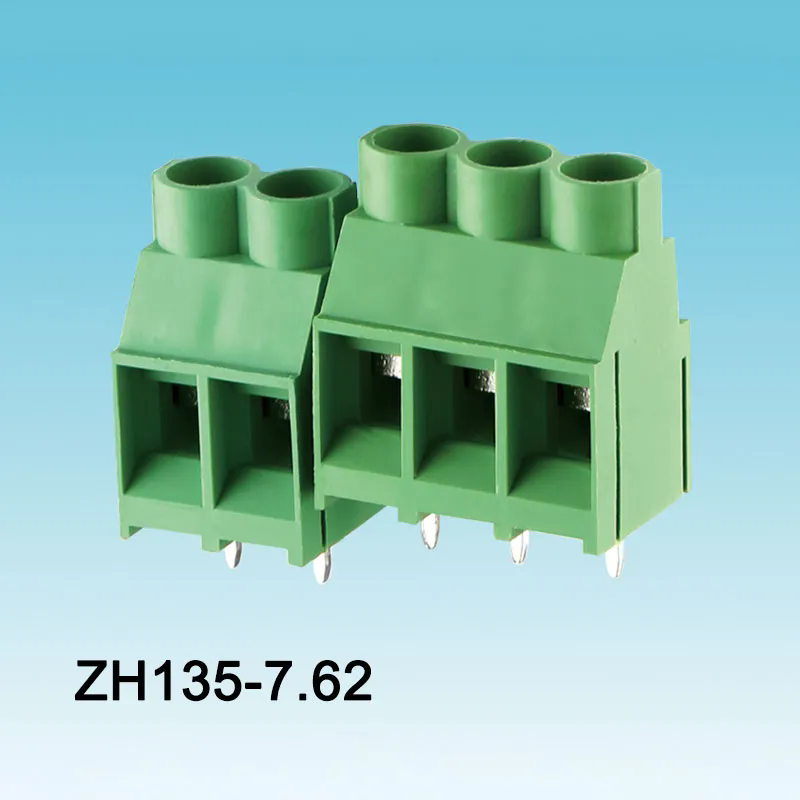The Essential Guide to Screw PCB Terminal Blocks: Reliable Connections for Your Circuitry
2024-08-19
In the intricate world of electronics, where reliability and precision are paramount, the components used for connecting and managing electrical circuits play a critical role. Among these components, screw PCB (Printed Circuit Board) terminal blocks are indispensable for ensuring secure and stable electrical connections. This blog will explore the features, benefits, applications, and considerations of screw PCB terminal blocks, and why they are a preferred choice for many electronic and electrical applications.
What is a Screw PCB Terminal Block?
A screw PCB terminal block is a type of electrical connector used to connect wires to a printed circuit board (PCB). It consists of a block with multiple terminals where wires can be secured using screws. The primary function of a screw PCB terminal block is to provide a reliable and robust connection between the PCB and external wiring, facilitating the transmission of electrical signals or power.
Key Features of Screw PCB Terminal Blocks
1. Secure Wire Connection: The screw mechanism allows for a firm grip on the wires, ensuring that they are held securely in place. This prevents accidental disconnection and maintains a stable electrical connection.
2. Ease of Use: Screw terminal blocks are relatively easy to install and use. Wires are inserted into the terminal and secured by tightening screws, which can be done manually with a screwdriver.
3. Versatility: Screw PCB terminal blocks come in various sizes and configurations, including single-row and multi-row designs. This versatility allows them to accommodate different wire sizes and connect multiple wires simultaneously.
4. Durability: Made from high-quality materials such as thermoplastic or metal alloys, screw PCB terminal blocks are designed to withstand mechanical stress, vibration, and environmental conditions.
5. Polarity and Identification: Many screw terminal blocks feature clear labeling or color-coding for easy identification of polarity and wire connections, which simplifies installation and troubleshooting.
6. Insulation: Screw PCB terminal blocks often come with insulated housings that help prevent short circuits and ensure safe operation by protecting the terminals and wires.
Benefits of Screw PCB Terminal Blocks
1. Reliability: The screw mechanism ensures a strong and reliable connection, reducing the risk of loose connections and intermittent faults. This reliability is crucial for maintaining consistent performance in electronic systems.
2. Flexibility: Screw terminal blocks accommodate a wide range of wire sizes and types, making them suitable for various applications. This flexibility simplifies design and integration processes.
3. Maintenance and Repair: The ability to easily disconnect and reconnect wires makes screw terminal blocks ideal for maintenance and repair tasks. They allow for quick replacement or adjustment of wiring without needing to remove the entire PCB.
4. Cost-Effectiveness: Screw PCB terminal blocks are generally cost-effective compared to other types of connectors. Their simplicity and ease of use contribute to lower overall system costs.
5. Enhanced Safety: The secure connection and insulated design of screw terminal blocks enhance safety by minimizing the risk of electrical shorts and accidental contact with live terminals.
Applications of Screw PCB Terminal Blocks
1. Industrial Automation: In industrial settings, screw PCB terminal blocks are used to connect sensors, actuators, and other control devices to control panels and PLCs (Programmable Logic Controllers).
2. Consumer Electronics: Screw terminal blocks are found in various consumer electronics, such as power supplies, audio equipment, and home appliances, where they provide reliable wire connections.
3. Automotive Industry: In automotive applications, screw PCB terminal blocks are used for connecting wiring in control systems, lighting, and other electronic components within vehicles.
4. Building and Infrastructure: Screw terminal blocks are employed in building automation systems, including lighting controls, HVAC systems, and security systems, to manage and connect various electrical components.
5. Telecommunications: In telecommunications equipment, screw terminal blocks help establish connections between different parts of the system, ensuring reliable signal transmission and power distribution.
Considerations When Choosing Screw PCB Terminal Blocks
1. Wire Size and Type: Ensure that the terminal block you select is compatible with the wire sizes and types used in your application. Check the specifications for wire gauge and insulation requirements.
2. Current Rating: Choose a terminal block with a current rating that matches the requirements of your circuit. Overloading a terminal block can lead to overheating and potential failure.
3. Voltage Rating: Verify that the voltage rating of the terminal block is suitable for your application to ensure safe operation and prevent electrical breakdown.
4. Mounting Options: Consider the mounting options available for the terminal block, such as through-hole or surface-mount, and select one that fits your PCB design and assembly process.
5. Environmental Conditions: If the terminal block will be exposed to harsh environmental conditions, such as high humidity or extreme temperatures, select a block with appropriate protection features and materials.
Future Trends and Innovations
The field of PCB terminal blocks is evolving, with ongoing advancements aimed at improving performance and functionality:
1. Miniaturization: As electronic devices become more compact, there is a growing demand for smaller and more compact screw terminal blocks that offer the same reliability in a reduced footprint.
2. Smart Features: Emerging technologies are introducing smart features into terminal blocks, such as sensors for monitoring connection status and integrated diagnostic capabilities.
3. Enhanced Materials: Advances in materials science are leading to the development of terminal blocks with improved thermal and chemical resistance, enhancing their performance in challenging environments.
4. Automation Compatibility: The integration of screw terminal blocks with automated assembly and testing processes is improving manufacturing efficiency and quality control.
Conclusion
Screw PCB terminal blocks are a fundamental component in the realm of electrical and electronic connectivity. Their ability to provide secure, reliable, and versatile connections makes them an essential choice for a wide range of applications, from industrial automation to consumer electronics. By understanding their features, benefits, and applications, you can make informed decisions when selecting the right screw terminal blocks for your projects, ensuring optimal performance and reliability in your electronic systems.



